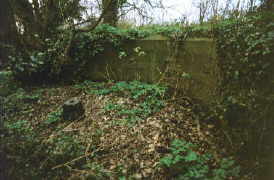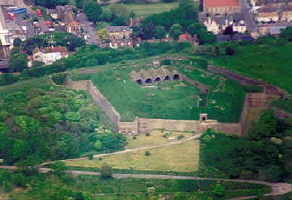
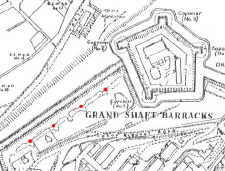
& North Lines Right Battery


Drop Redoubt from Over Sea, May 1999 and.........Section of War Dept Plan
Red dots on plan indicate position of North Lines Right Battery
The Drop Redoubt is at the eastern-most end of the North Lines, that is the system of dry ditches extending from the Redoubt westwards towards Folkestone for the entire length of the defences. During the invasion fever of 1804 it was decided by the Inspector General of Fortifications, Lieutenant-General Robert Morse, that there should be a Citadel at the western end of the west hill, this to remain largely a fieldwork as laid down 20 years previously, a polygonal fort at the eastern end, at the Drop, a powerful detached work midway, the three linked by a strong defensive ditch. These turned into the Citadel, Drop Redoubt and North Centre Bastion respectively.
The first building programme on the Drop Redoubt ran between 1804 and 1810. There was a second building program on the Heights during the 1850’s and 1860’s due to yet another invasion scare by yet another Napoleon. A Royal Commission was set up to look into the defences of the United Kingdom and recommend improvements thereto.
Caponiers added
It was then that the modern Drop Redoubt that we know today was finished; The four caponiers were added, as were bombproof officers’ quarters, the ditch running from the redoubt to the cliff edge, and the main magazine was strengthened. The four caponniers were added to enable enfilading fire along each ditch. These were not just stuck on the corners of the redoubt, but ‘knitted’ into the brickwork along with corresponding ‘bulges’ in the counterscarp walls. The barracks provided accommodation for 4 officers and 90 men.
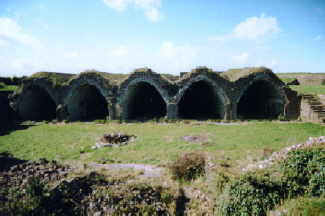
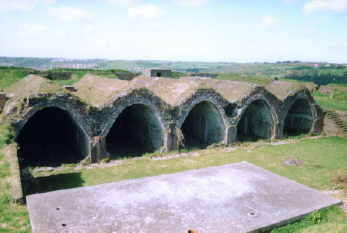
The five bomb-proof casemates providing quarters for the 90 men, May 2001
These casemates are in an appalling state, the wooden fronts having been destroyed by vandals over the last 30+ years, water running down the inside walls and the very core of the buildings acting as ammunition for the local kids' brick fights.
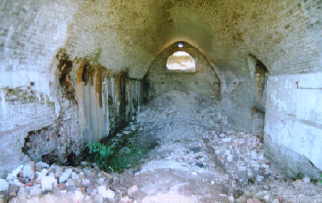
The inside of number 5 casemate, May 2001
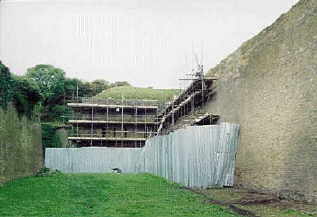
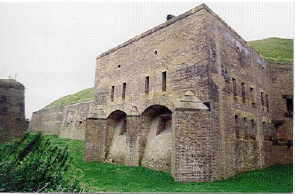
LEFT: Caponnier no.1 During Conservation Work, October 1998
RIGHT: Caponnier no. 4 Following Conservation Work, October 1998
The Drop Redoubt was decommissioned in the 1950’s when Coast Defence officially finished and for many years remained in a state of decay. Several attempts to carry out conservation were made over the years but all ended prematurely due to excessive vandal activity. Even the spotlights which were installed in 1994 to illuminate the Redoubt at night to match the Castle’s flood lights had been either smashed or stolen in a comparitively short space of time.
Conservation programme
The latest conservation programme carried out by English Heritage which finished two years ago had lasted for about three years and had been reasonably vandal-proof thanks to the vigilance of the workmen and EH. This is not to ignore the copious amounts of tools that have been stolen from on-site lock-ups and the odd attempted break-in.
That conservation programme finished due to 'an assessment of regional priorities' by English Heritage, however according to an influential source within EH work is scheduled to restart on preserving Drop Redoubt in 2002, which of course is great news.
Some pictures of inside the Redoubt...
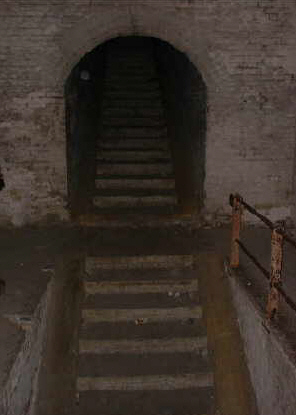
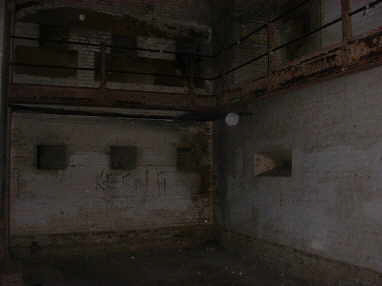
LEFT: Inside Caponnier No.1 RIGHT: Inside Caponnier No. 4
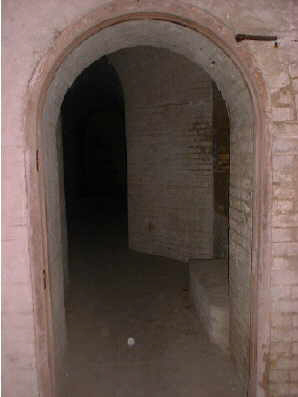
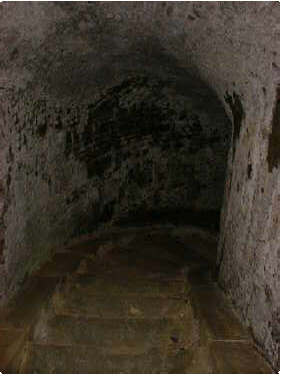
LEFT: Inside Caponnier No.4 RIGHT: Staircase down to Caponnier No. 4
![]()
At around the same time as the Caponniers were being
added to the Drop Redoubt and other modernisation programs were being carried out around
the Heights a new battery was being built along the North Lines. This was again because it was thought the whole
hill to be weak should an attack come from the north or north-west.

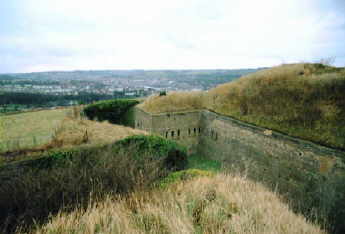
Positions of guns are indicated by red dots Caponnier nbr. 2 from North Lines Right Battery
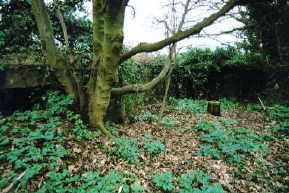
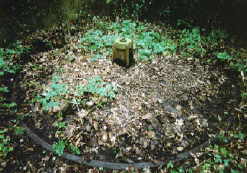
On the right hand picture above, note the steel racer; the metal rail on which the gun carriage would have revolved
How the battery looks today. Very overgrown !
